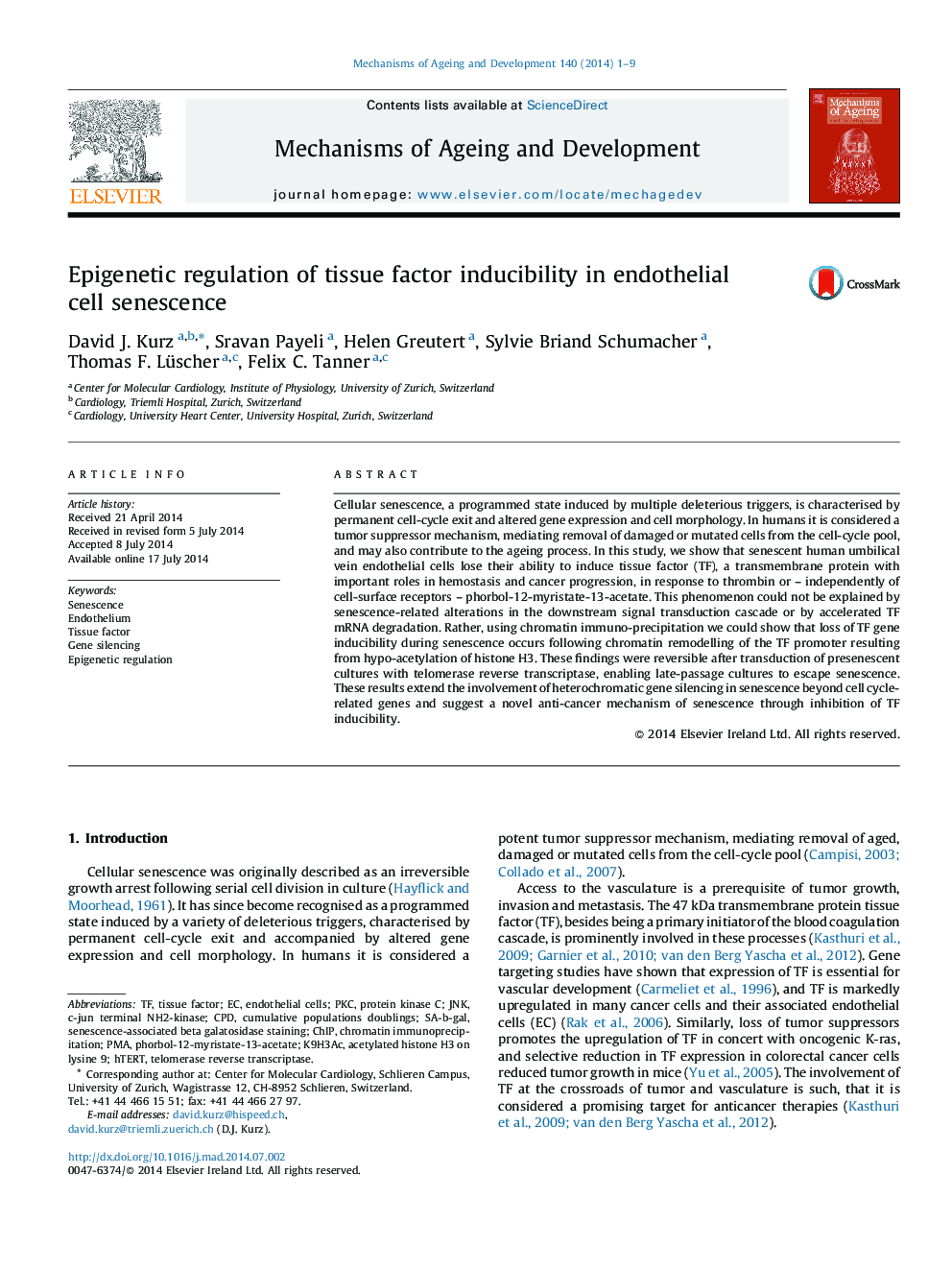| Article ID | Journal | Published Year | Pages | File Type |
|---|---|---|---|---|
| 1919199 | Mechanisms of Ageing and Development | 2014 | 9 Pages |
•In senescent human endothelial cells, tissue factor can no longer be induced.•Loss of tissue factor inducibility is due to heterochromatic gene silencing.•Escape from senescence after telomerase transduction reversed TF gene silencing.•Our findings suggest an additional anti-cancer mechanism of senescence.
Cellular senescence, a programmed state induced by multiple deleterious triggers, is characterised by permanent cell-cycle exit and altered gene expression and cell morphology. In humans it is considered a tumor suppressor mechanism, mediating removal of damaged or mutated cells from the cell-cycle pool, and may also contribute to the ageing process. In this study, we show that senescent human umbilical vein endothelial cells lose their ability to induce tissue factor (TF), a transmembrane protein with important roles in hemostasis and cancer progression, in response to thrombin or – independently of cell-surface receptors – phorbol-12-myristate-13-acetate. This phenomenon could not be explained by senescence-related alterations in the downstream signal transduction cascade or by accelerated TF mRNA degradation. Rather, using chromatin immuno-precipitation we could show that loss of TF gene inducibility during senescence occurs following chromatin remodelling of the TF promoter resulting from hypo-acetylation of histone H3. These findings were reversible after transduction of presenescent cultures with telomerase reverse transcriptase, enabling late-passage cultures to escape senescence. These results extend the involvement of heterochromatic gene silencing in senescence beyond cell cycle-related genes and suggest a novel anti-cancer mechanism of senescence through inhibition of TF inducibility.
